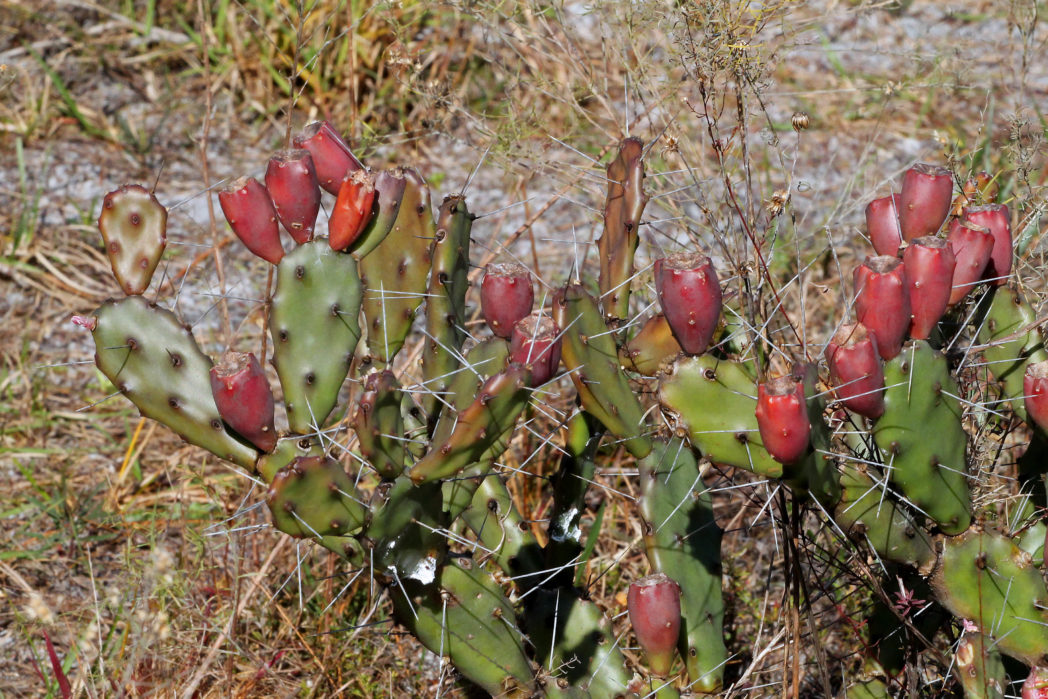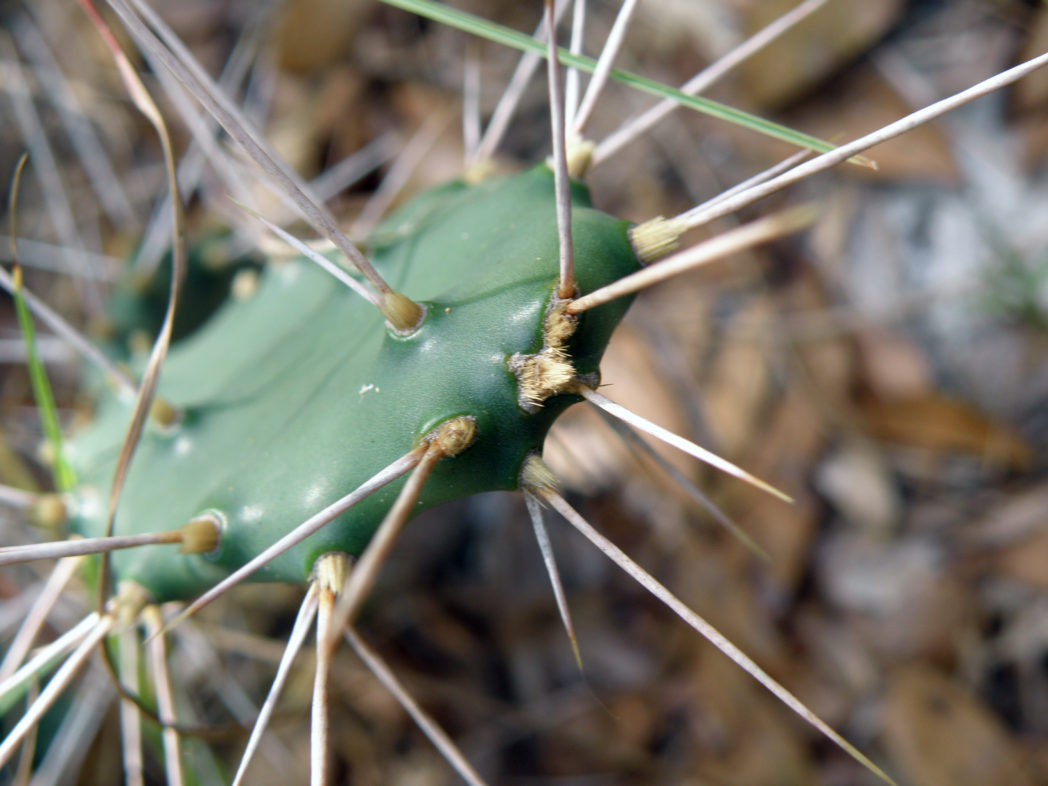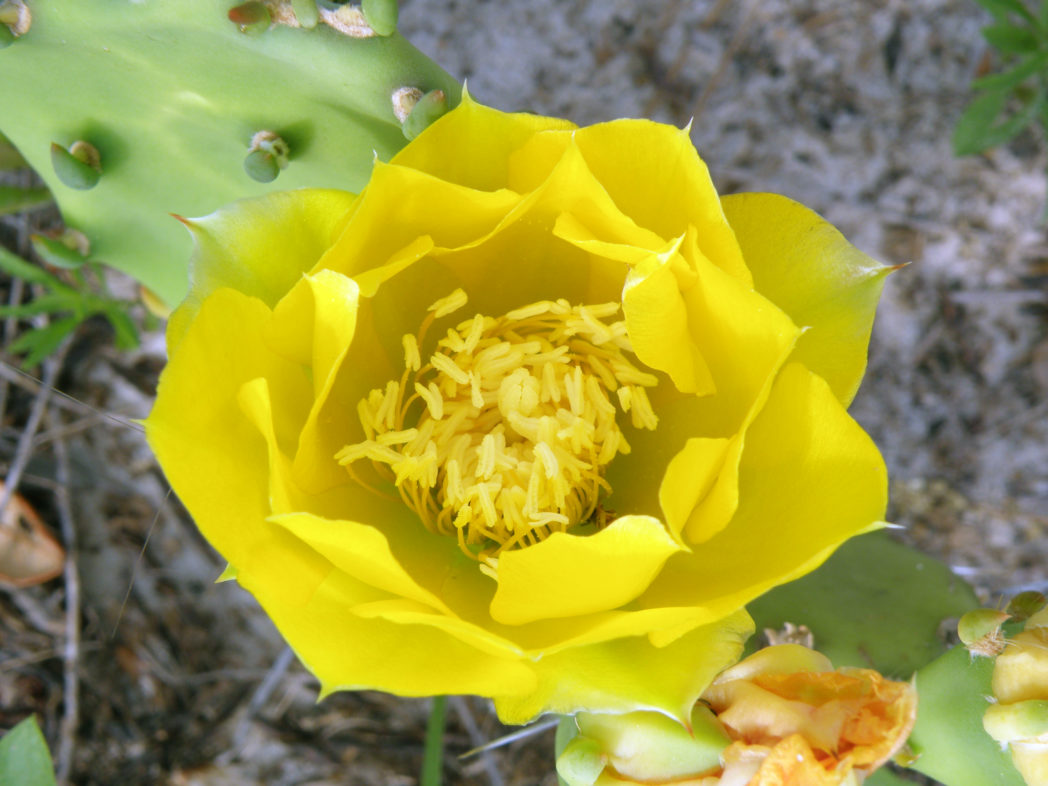Pricklypear cactus
Pictured above: Pricklypear cactus (Opuntia mesacantha) by Stacey Matrazzo. Click on terms for botanical definitions. View post as a PDF.
Note: Opuntia humifusa is now classified as Opuntia mesacantha.
Pricklypear cactus (Opuntia mesacantha) is an erect to sprawling perennial succulent. Its blooms are large with bright yellow petals, sepals and stamens. Petals and sepals are often indistinguishable, and may have a waxy feel. Flowers occur singularly or in clusters. Leaves are absent, replaced by flattened cladodes, commonly referred to as “pads.” The cladodes are segmented, fleshy and armed with two types of barbed bristles: long, fixed spines, and small glochids or hairlike bristles (see caution below). Flowers are born on the margins of mature cladodes. The pear-shaped fruit is hard and green; it softens and turns a bright purplish-pink as it matures. It is also covered in fine bristles.

Pricklypear cactus occurs naturally in scrub, scrubby flatwoods, sandhills, coastal strands, ruderal sites and dry, open areas. It flowers in late spring and attracts a wide range of pollinators, especially native bees. The fleshy fruits and seeds are eaten by birds, small mammals and gopher tortoises (who also enjoy browsing the pads).
Pricklypear cactus fruits and young pads are edible to humans once they have been carefully de-bristled. The ripe fruits can be eaten raw or used to make juice, jam or syrup. The pads or nopales can be sautéed or grilled.

Caution: Long spines and glochids will easily penetrate skin and can be very painful to remove. The glochids can cause skin irritation upon contact. Handle with care. For more information on handling and preparing pricklypear, visit www.wildflower.org.
Family: Cactaceae (Cactus family)
Native range: Nearly throughout Florida
To see where natural populations of pricklypear cactus have been vouchered, visit www.florida.plantatlas.usf.edu.
Hardiness: 8A–11
Soil: Dry, well-drained sandy soil
Exposure: Full sun
Growth habit: 1–3’+ tall, usually wider than tall
Propagation: Seeds, cuttings/fragments
Garden tips: Pricklypear can be easily grown and is very hardy and enduring. Plant in an obvious location where there is no risk of it being accidentally stepped on. Pad fragments will regenerate into a new plant; simply bury the end of the fragment in a sandy, sunny spot and wait for your new plant to emerge.
Pricklypear cactus plants are sometimes available from nurseries that specialize in Florida native plants. Visit www.plantrealflorida.org to find a nursery in your area.

